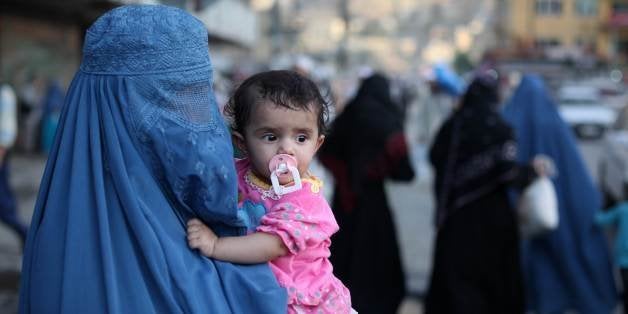
I visited Maryam when her baby was 2 weeks old. I had been meaning to go sooner, but the steep, icy roads up to her 'house' in Kabul prohibited an earlier visit. I guess that Maryam was about 15 when she had her baby, but no one really knows. She lived in a noisy and sparse house full of women and babies -- no men, which is unusual in Afghanistan and left the household somewhat vulnerable. It was wintertime, bitterly cold with little heating. I have no idea how these women ever got money for food, let alone heating. Maryam had recently moved to Kabul from another part of the country, didn't speak Dari, (the trade language of Kabul) and certainly didn't know how to read or write. When I arrived at her dilapidated mud house, I found her sitting with her tiny new baby heavily wrapped. She gave birth at home and had not had any postnatal care. I undressed the baby to conduct a newborn check. When I removed the baby's hat, I was horrified to discover a large oozing open sore on the side of the head, stretching down to the face. The baby had a severe case of impetigo -- an easy-to-treat but infectious bacterial condition, which can become serious if left unchecked. It is most likely that Maryam would not have sought any medical care for her baby had I not visited; she had no money to pay for transport to a health facility, no male chaperone to accompany her, she could not speak the language, didn't have the skills to negotiate a busy clinic and would probably have been ripped off at the pharmacy.
An estimated 289,000 women died giving birth last year, and a staggering 2.9 million newborns die during their first month of life, amid sustained efforts to meet the Millennium Development Goals (MDG's) 4 and 5 targets of reducing child and maternal mortality rates, respectively.
Significant progress towards reaching the MDG's has been made, particularly in the area of maternal health. The number of women dying due to pregnancy or birth related causes fell by nearly 50 percent globally since 1990 - an enormous achievement.
Although overall, child (under 5) deaths have been declining, progress towards improving newborn survival is lagging behind. No specific MDG target around reducing newborn mortality has meant less focus in this area. Currently 40 percent of child deaths occur in newborns, representing an increase on newborn deaths in the past 10 years.
There has been a tendency to treat the health of mothers and newborns as separate entities, instead of taking the necessitated fully integrated approach. The Lancet's recent Every Newborn series highlighted that the health and wellbeing of mothers and their babies is inseparable and that initiatives to improve maternal health must also incorporate newborn health elements. Putting this into practice, the Every Newborn Action Plan supports the implementation of "newborn-specific actions" within the context of maternal, newborn, child and adolescent health. As a midwife myself, it has been encouraging to see the fantastic recent emphasis on strengthening and scaling up midwifery on a global level -- midwives are perfectly placed to provide care to the mother and baby dyad, and are crucial to the success of MDG's 4 and 5 and post-2015 targets related to maternal and newborn health.
But it goes even further than this. Evidence shows that educational gains for girls and women are associated with reduced child mortality; the use of modern contraceptives among women of childbearing age reduces fertility rates which in turn benefits the economic growth of countries and leads to greater job opportunities for women; empowering women through community participatory women's groups improves maternal and newborn health. The Every Woman, Every Child movement states that, "The health of women and children is critically important to almost every area of human development and progress".
There are less than 500 days left to reach the MDG targets. The 17 proposed Sustainable Development Goals encompass a much broader agenda and it is not yet clear how progress will be measured. The great challenge that lies before us is to maintain the focus and build on the gains of improving the lives of mothers and their babies in the post-2015 world.
In spite of living in Afghanistan's largest and best-resourced city, Maryam did not have any antenatal care. As a teenager, she was at higher risk of pregnancy related complications during pregnancy and birth. Fortunately, she remained healthy and her birth was straightforward, and with help accessing health care, her baby's impetigo was treated. But things could have been different. I want to see a day when young women like Maryam are educated, protected from child marriage, free to choose when they start having children, able to access care from a skilled midwife during pregnancy, birth and the postnatal period, free to plan how often and how many subsequent children to have, and whose babies not only survive, but thrive.